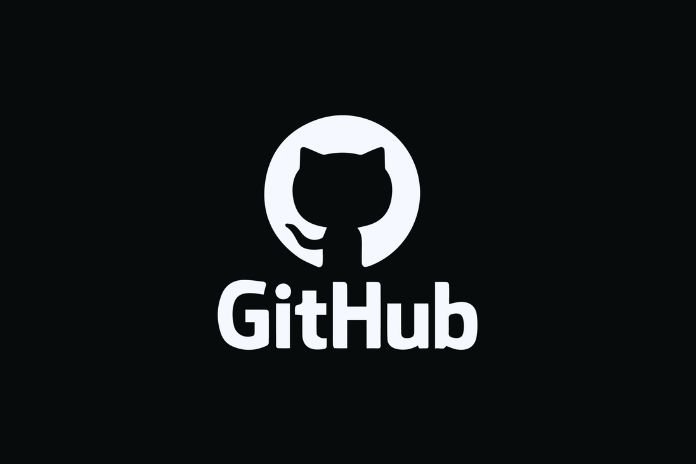GitHub: What Is It, And How Do You Use It?

In web engineering, developers often need to use the same pieces of code for different projects. Having a cloud service that helps programmers store and manage their codes is a real advantage, especially in the context of collaboration in a web agency. This is the whole point of GitHub, a cloud service whose popularity is unparalleled today. The tool welcomes more than 25 million professional users. GitHub, according to experts, helps improve collaboration and workflow. This article sheds light on this service and gives tips for using it effectively.
What Is Git?
It’s easy to confuse Git and GitHub. However, there is a notable difference between the two terms. Launched in 2005, Git is an open-source project that quickly became one of the most popular version control systems (VCS) on the market. More than 87% of programmers around the world use the Git system for their various projects. It is a distributed version control system.
This means that any programmer on a team can manage the source code and change history if they have authorized access. Changes are usually done using Git command line tools. Unlike centralized VCSs, the Git system offers feature branches. Each collaborator on a developer team can create a feature branch that provides a locally isolated repository, thereby making changes to the project’s source code.
Please note that feature branches do not affect the main branch. However, it is at the main branch level that the original code of the project is found. When you make changes, the feature branch may merge with the main one. It is, therefore, only after the feature and main branches are merged that the changes become effective.
Version Control
Version control is a system that makes it easier to track and manage changes made to a file or set of files. Software engineers often use it to track different changes made to source code. In this sense, the version control system appears to be an indispensable element in the software engineer’s toolbox. The latter can be used to analyze the relevance of the modifications and cancel them in the event of an error.
In other words, management control is a system that allows developers to work on open-source software simultaneously. In particular, it will enable them to make any modifications they wish without infringing on the work of their colleagues. The problem is that specific changes made to source code by a collaborator can ruin the project at deployment time.
Thanks to GitHub and its version control system, you can easily undo revisions and bring back the previous version of the project. In summary, the version control offered by GitHub makes it possible to minimize or even eliminate the risks of making errors. It thus gives developers the freedom to collaborate without too much worry.
How To Use GitHub?
To use GitHub, you must first start by creating an account on the platform. Creating a GitHub account is free. Go to https://github.com and follow the instructions. Developers’ interest in GitHub lies in its ability to facilitate collaboration on different projects on an international scale. Indeed, anyone can retrieve complete projects on GitHub and contribute to them.
Of course, this is only possible if the project owners allow it. On the platform, you can clone public projects, duplicate them (fork) and contribute by making modifications. The guide we offer here will familiarize you with the most essential elements of GitHub, such as:
- Deposits;
- Branches;
- Clerks;
- Pull requests.
We’ll walk you through creating your code repository and show you the pull request process on GitHub. This process is a method widely adopted by programmers who use GitHub to create and review code. In addition, thanks to this quick start guide, you will be able to:
- Create and operate a Git repository;
- Start and manage a new branch;
- Make changes to a file;
- Make a pull request (open and merge a pull request).
For this tutorial, it is optional to know how to code, nor to know how to use command lines.
The Different Pricing Plans For Using The GitHub Platform
First of all, GitHub is a free source code hosting service. However, it also offers paid plans for managing and hosting private codes. The basic plan provides infinite deposits and is open to endless collaborators. This plan, however, offers a storage space limit of 500 MB. If you want to work professionally, with an in-depth exploration of GitHub’s multiple features, ideally opt for one of the paid plans. With $4 and $21 per month, you have access to the “Team” and “Enterprise” plans, respectively.
After selecting your plan, filling in the necessary information and finalizing the registration process, you can now access the features offered by the GitHub platform. Unlike Git, using GitHub does not require any coding skills and does not require the use of the command line. Now, let’s look at the first step in your learning: creating a GitHub repository.
Creating A Repository
Also called “repo”, the repository constitutes the heart of your project. It may be in the form of a file or a set of files containing code, text, images, or any other element. To begin the process of creating your GitHub repository, we suggest you follow the following steps. To begin, click on the “Create Repository” button to start a new project. In principle, your account name will automatically appear in the “Owner” section.
Choose a name for your repository and make sure it is set to “Public” to complete the open-source project. Then check the “Add README file” box. Finally, validate by clicking on the “Create repository” button. You have now created your new repository with the original file of your project. In the following steps, you will discover the different possibilities available to you with your deposit.
Creating GitHub Branches
Creating branches allows you to generate different variations of a GitHub repository. By modifying the project within the feature branch, the developer can evaluate the impact of these changes on the main project during integration. Here is the ideal procedure for generating a feature branch:
- Access the new repository created;
- Click on the main button (hand);
- Enter the name of the new feature branch;
- Tap “Create branch”.
You have just created a feature branch that is almost identical to the main branch. You can now make changes freely without altering the structure of the main project.
Commit Changes: GitHub Commits
“GitHub commits” correspond to modifications recorded on the platform. Each time you modify the feature branch file, you must necessarily “commit” it in order to save the changes. To make and validate a modification, here is the procedure you must follow:
- Select “main”, then choose the newly created branch from the drop-down menu to access the feature branch;
- Click on the pencil icon to start editing the file;
- Once completed, write a short description of the changes made;
- Finally, click “Commit Changes”.
Create Delete Requests On GitHub
In order to share recently made changes with other developers working on the same project, it is necessary to create a “Pull Request”. The pull request is essential because it makes collaboration on GitHub easier. “Pull Requests” will allow you to observe the differences between the original project and your feature branch. The Pull Request is a simple way to ask your collaborators to review code.
If the other programmers on the project approve the request, they can merge the Pull Request, integrating the changes into the main project. To make a Pull Request, here are the steps to follow:
- Access the “Pull requests” tab;
- Click on “New pull request”;
- In the “Example Comparisons” section, choose the feature branch you were working on;
- Carefully analyze the changes before pressing “Create pull request”;
- On the new page, write the title and provide a brief description of your contribution to request the merge;
- Finally, click on the “Create pull request” button.
Now, all other collaborators can merge your changes with the original project files.
Copy A Repository: Fork Vs Clone
To duplicate a GitHub repository on your machine, use the platform’s “clone URL” option. You will automatically get the repository link. Next, you need to run the “git clone [URL]” command in your console. Another solution is to use GitHub’s “fork” option. A fork is a reproduction of a remote repository that can allow you to make changes to the code without impacting the original project.
The difference between a fork and a clone is that a fork establishes a connection between the reproduction and the original project. This makes it easier to contribute to the original project by submitting “Pull Requests”. When cloning a project, it is not possible to recover subsequent changes from the original project. You also cannot contribute to the project unless the actual project owner grants you special rights (privileges).
The “fork” function proves highly beneficial because it offers anyone the possibility to reproduce a project and participate in its development. This gives assurance to the project author that the original version will maintain its integrity. It is, in fact, up to the author to validate the different merge requests (pull requests) that the contributors propose or not.
GitHub For Data Science And Machine Learning: The Importance Of Version Control
Mastering version control is of capital importance in specific fields, particularly in Data Science. This promotes more effective team collaboration, simplifies project sharing, and encourages mutual support when similar processes are repeated. Even for a Data Scientist usually working alone, version control offers the possibility of experimenting and testing changes without directly impacting their project.
The GitHub platform is also frequently used by Machine Learning engineers. It allows them to test the production of machine-learning models before applying them. GitHub has, therefore, established itself as an essential tool for data engineering and machine learning.
In Conclusion
In principle, GitHub is a platform associated primarily with the software engineering community. But it offers some versatility and can be used in various sectors. Whether for small teams or large companies working on projects involving file creation, the GitHub service can prove invaluable. For example, editorial teams and those dedicated to digital marketing can take advantage of GitHub to manage their projects efficiently.
Likewise, independent professional creatives can leverage the platform to coordinate their work when collaborating with others. Contrary to popular belief, using GitHub is not limited to programming or development. This version control platform, accessible free of charge, adapts to different types of projects. It can be used in a very diverse way.
Read Also: UCaaS: What Market And What Future?






